Fall is here, and that means that winter is just around the corner. The Atlanta area usually doesn’t see the accumulation of snow like northern regions do, but we do get our fair share of ice storms. By preparing your car for winter now, you can help avoid the headache of being stranded without essential cold-weather supplies.
Preparing Your Car for Winter
Preparing your car for winter is a snap with these 8 easy steps.
-
Keep an Emergency Kit in Your Car
Emergency kits contain all the essential items that you could need in case your car breaks down unexpectedly. These kits are useful at any time of year but can be especially valuable during the winter.
You can buy pre-assembled emergency kits at your local auto shop, or you can create one of your own.
Pack your winter weather emergency kit with:
 Gloves
Gloves- Shovel
- Ice scraper
- Cat litter or sand
- Road salt (if your area allows it)
- High-energy snacks like granola bars or trail mix
- Coolant
- Blanket
- First aid kit
- Flashlight
- Radio
- Extra phone charger (battery pack)
Although this list covers the needs of most individuals, families or people traveling with pets may find it useful to include extra items like diapers, baby formula, or pet food as needed. Customize your emergency kit to best fit your needs.
-
Have an Oil Change
Cold temperatures thicken oil, which makes it more difficult to properly lubricate the engine. The end result is potential damage to your engine which could lead to costly repairs.
-
Change Your Windshield Wiper Blades
In general, changing your windshield wiper blades twice a year is the best way to keep your windscreen squeaky clean.
Depending on where you live, road salt and pollutants can lead to a film on your windows that decreases visibility. Older or worn out windshield wiper blades may cause smudging. Replacing the blades on a regular basis will ensure that you’re always able to see clearly.
-
Check Your Tires
 The change in temperature naturally affects the pressure in your tires. Your local tire shop can easily check the PSI (pounds per square inch) in your tires and adjust the amount of air within a few minutes.
The change in temperature naturally affects the pressure in your tires. Your local tire shop can easily check the PSI (pounds per square inch) in your tires and adjust the amount of air within a few minutes.
Another important consideration for winter driving is the amount of tread that is on your tires. Tires with adequate tread will give you maximum traction on hazardous conditions, while tires that have low tread or are ‘balding’ can lead to slippage and potential accidents.
-
Keep Your Gas Tank Full
During the winter, keeping your gas tank at least ½ full can prevent corrosion within the gas tank. Condensation can build up inside the tank, leading to damage and potentially requiring a replacement. Condensation is absorbed by gasoline in tanks that are at least half full.
-
Have Your Battery Tested
Do you know how long your battery has been in your car? If you’re like most people, this may be a mystery, especially if your car was purchased used.
Cold weather decreases the lifespan of your battery and could potentially leave you stranded. You can get the charge tested by your local mechanic and have a replacement battery installed or on hand as needed.
-
Add Antifreeze to Your Coolant and Windshield Wiper Reservoirs
 Adding antifreeze to your coolant and windshield wiper reservoirs is a quick and easy step that will prevent cracks or breaks in the tanks or pipes resulting from frozen liquids.
Adding antifreeze to your coolant and windshield wiper reservoirs is a quick and easy step that will prevent cracks or breaks in the tanks or pipes resulting from frozen liquids.
You can purchase antifreeze at your gas station or local auto shop. Many grocery stores carry antifreeze as well.
-
Visit T3 Atlanta
Last but not least, by bringing your car into T3 Atlanta for an inspection, you can ensure that your car is in top shape for the winter months. We’ll inspect your belts and hoses, perform tune-ups, top off fluids, and much more.
There’s nothing like getting stuck on the side of the road when the thermometer is below 30 degrees! By preparing your car for winter, you’ll be ready for whatever weather strikes the Metro area this year.
 Find out how much your car is worth by visiting a vehicle appraisal site such as
Find out how much your car is worth by visiting a vehicle appraisal site such as  A reliable car is a car that always starts and doesn’t break down except in very rare circumstances. In other words, a reliable car doesn’t give you headaches!
A reliable car is a car that always starts and doesn’t break down except in very rare circumstances. In other words, a reliable car doesn’t give you headaches! That convertible you’ve had since college might have been perfect back then, but the demands of life have a way of influencing your choice of vehicle.
That convertible you’ve had since college might have been perfect back then, but the demands of life have a way of influencing your choice of vehicle. Water damage is a problem anywhere, but can be especially bad in cars. After all, cars are designed to keep water out. They’re enclosed spaces without much ventilation when the engine isn’t running. As if that’s not difficult enough, the carpet lining in a car isn’t removable; only the floor mats can be taken out to dry.
Water damage is a problem anywhere, but can be especially bad in cars. After all, cars are designed to keep water out. They’re enclosed spaces without much ventilation when the engine isn’t running. As if that’s not difficult enough, the carpet lining in a car isn’t removable; only the floor mats can be taken out to dry. Move the car somewhere that is covered, such as a garage, carport, or under a tarp, to avoid more water getting in.
Move the car somewhere that is covered, such as a garage, carport, or under a tarp, to avoid more water getting in. Once your car carpets are dry, sprinkle baking soda over the affected area. Let sit for at least half an hour, then vacuum. Repeated as needed.
Once your car carpets are dry, sprinkle baking soda over the affected area. Let sit for at least half an hour, then vacuum. Repeated as needed.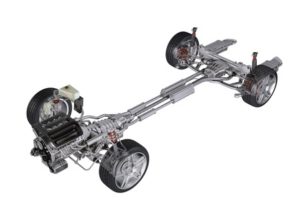
 You may have heard that tires do not wear evenly on AWD cars. In many cases, front tires do wear more quickly than rear tires.
You may have heard that tires do not wear evenly on AWD cars. In many cases, front tires do wear more quickly than rear tires. Although T3 Atlanta does not perform tire work, we can diagnose and repair issues with the powertrain, axles, transmission, and more. We are experts at Toyota, Lexus, Nissan, and Infiniti repair. Visit us at one of our two convenient Atlanta locations!
Although T3 Atlanta does not perform tire work, we can diagnose and repair issues with the powertrain, axles, transmission, and more. We are experts at Toyota, Lexus, Nissan, and Infiniti repair. Visit us at one of our two convenient Atlanta locations! A hybrid car is one that is powered by both electricity and gasoline. In essence, hybrids have two engines. One is fuel powered; the other is electric. Unlike a purely electric car, you do not need to plug most hybrids into a wall outlet to recharge. Hybrids have a built-in system to recharge while in use.
A hybrid car is one that is powered by both electricity and gasoline. In essence, hybrids have two engines. One is fuel powered; the other is electric. Unlike a purely electric car, you do not need to plug most hybrids into a wall outlet to recharge. Hybrids have a built-in system to recharge while in use. Higher upfront cost: As a direct result of the additional technology beneath the hood, hybrids can see buyers spending considerably more upfront, even used.
Higher upfront cost: As a direct result of the additional technology beneath the hood, hybrids can see buyers spending considerably more upfront, even used.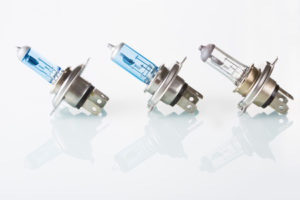 Bulbs tend to be white to off-white in color
Bulbs tend to be white to off-white in color Increased visibility and safety: Xenon and LED bulbs are much brighter and usually have a longer range than halogen bulbs. This means that you’re more likely to see road hazards and still have enough time to avoid them.
Increased visibility and safety: Xenon and LED bulbs are much brighter and usually have a longer range than halogen bulbs. This means that you’re more likely to see road hazards and still have enough time to avoid them.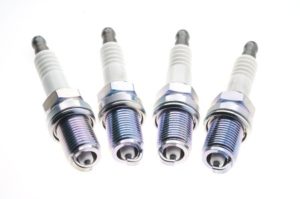 Normal: ‘Normal’ or ‘standard’ spark plugs are generally tipped with a copper coating. These wear down fairly quickly, with an average lifespan of 20,000 – 40,000 miles. The biggest benefits of copper-tipped spark plugs is that they are affordable and run at cooler temperatures than spark plugs with exotic metal tips.
Normal: ‘Normal’ or ‘standard’ spark plugs are generally tipped with a copper coating. These wear down fairly quickly, with an average lifespan of 20,000 – 40,000 miles. The biggest benefits of copper-tipped spark plugs is that they are affordable and run at cooler temperatures than spark plugs with exotic metal tips. If you don’t have an owner’s manual, you can always find the specifications at your auto parts store. You will need to know the following information:
If you don’t have an owner’s manual, you can always find the specifications at your auto parts store. You will need to know the following information: Engine is idling roughly
Engine is idling roughly Maybe you’ve moved away and can no longer take your car to your trusted mechanic. Maybe you have recently purchased a brand that your mechanic does not service. Whatever the reason, you’re needing repairs and not sure about the quote you received. Perhaps it’s time to get a second opinion for car maintenance.
Maybe you’ve moved away and can no longer take your car to your trusted mechanic. Maybe you have recently purchased a brand that your mechanic does not service. Whatever the reason, you’re needing repairs and not sure about the quote you received. Perhaps it’s time to get a second opinion for car maintenance. Listen to your instinct. If you aren’t getting a good feeling about what you’re hearing, then don’t hesitate; listen to that feeling! There’s a good chance that you have that feeling for a reason. Move on to another mechanic.
Listen to your instinct. If you aren’t getting a good feeling about what you’re hearing, then don’t hesitate; listen to that feeling! There’s a good chance that you have that feeling for a reason. Move on to another mechanic. No one is looking forward to the next time they need to take their car into the mechanic for service. That said, when that time does arrive, you can be assured that the team at T3 Atlanta are comprised of award-winning experts who are prepared for any customer’s vehicle problem.
No one is looking forward to the next time they need to take their car into the mechanic for service. That said, when that time does arrive, you can be assured that the team at T3 Atlanta are comprised of award-winning experts who are prepared for any customer’s vehicle problem. Although cell reception is widespread these days, there are still large parts of the US which do not have reception. Having a backup is a great way to avoid getting lost. Most state border visitor information centers will have free maps. You can also download offline copies of maps to your smartphone or tablet for easy reference.
Although cell reception is widespread these days, there are still large parts of the US which do not have reception. Having a backup is a great way to avoid getting lost. Most state border visitor information centers will have free maps. You can also download offline copies of maps to your smartphone or tablet for easy reference.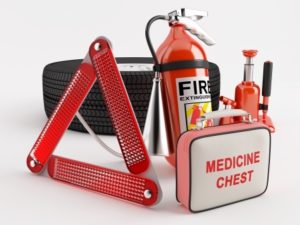 What to have in an emergency kit:
What to have in an emergency kit: Especially useful if you are travelling with kids, activities for the car will keep the young ones occupied so they aren’t constantly asking that age old question: “Are we there yet?”
Especially useful if you are travelling with kids, activities for the car will keep the young ones occupied so they aren’t constantly asking that age old question: “Are we there yet?” The vehicle condition refers to the overall state of the vehicle in relation to its age and use. This includes:
The vehicle condition refers to the overall state of the vehicle in relation to its age and use. This includes: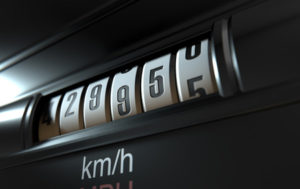 In more recent years, it has been argued that 100,000 is the new 200,000. Some cars seem to last forever, and more and more are appearing on used car lots with the odometer reading well over 90,000 miles.
In more recent years, it has been argued that 100,000 is the new 200,000. Some cars seem to last forever, and more and more are appearing on used car lots with the odometer reading well over 90,000 miles. Buying a used car is a great way to save some money while still finding the best fit for your needs. The experience can be very rewarding if you’re willing to do some extra legwork and have the patience to hold out for the right fit.
Buying a used car is a great way to save some money while still finding the best fit for your needs. The experience can be very rewarding if you’re willing to do some extra legwork and have the patience to hold out for the right fit.








